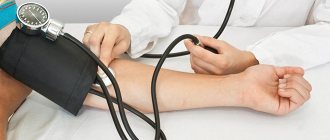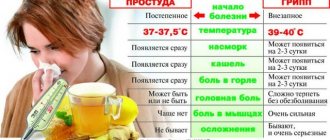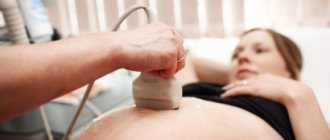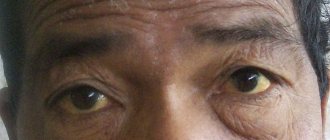To swaddle or not?
So, you've left the maternity hospital where your baby was born, and you're both facing your first night at home.
How will this night go? Will the baby be able to sleep as peacefully as he has the last few days? You torment yourself with questions, and your caring mother is already whispering in your ear: “Swaddle him.” For many generations of mothers, the words “newborn” and “swaddling” were inseparable. Nowadays, the image of a newborn “soldier” frozen at attention with a face flushed from effort is becoming a thing of the past, and is being replaced by a smiling gnome in a funny hat, snoring peacefully in a sling on his mother’s chest. Diapers have been replaced by nappies, baby vests, suits and other comfortable clothing for babies. But controversy on this topic does not subside.
The older generation of parents still advises swaddling a child. The old stories about how the baby’s legs will be straighter this way have not been confirmed by modern science. However, many parents are convinced from personal experience that the baby’s sleep is stronger and more peaceful when he is swaddled. Isn't this a worthy argument in favor of swaddling?
However, in order for a child to grow well and develop properly, he needs freedom of movement. And this is not the only argument against. Opponents of tight swaddling believe that it also suppresses the child’s will and contributes to the formation of a passive, dependent personality. Most experts recommend using some type of swaddling in the first few weeks of your baby's life only if absolutely necessary.
How to swaddle a newborn?
- Full tight swaddling of the baby: the baby is completely wrapped in a swaddle, and even the baby’s head is covered with a “hat” made of a swaddle.
- Simple swaddling: the baby is wrapped in a swaddle up to the neck, the head is completely open.
- Loose swaddling: in this case, the swaddle covers the baby's lower torso and legs. The chest and arms are open. This swaddling provides greater freedom of movement and facilitates breathing, allowing air to penetrate into the lower parts of the lungs without interference.
Which type of swaddling is right for you? Each of these methods has its own advantages - if you are not fundamentally against swaddling, you can alternate between different techniques depending on the circumstances and needs of the child.
So, for restless babies with a mobile nervous system, it is reasonable to use the technique of simple or free swaddling during sleep. Trembling and sudden chaotic movements of the arms or legs can interrupt the baby's sleep - even if it is loose, but swaddled, he feels calm and safe, as in the womb.
Or you can use children's clothing specially created for such needs: sheets for loose changing, envelopes and children's sleeping bags, which are fastened on hangers or at the waist. Recently, they have become very popular, and it is not surprising - after all, they can prolong and improve a baby’s sleep, and this is the most important gift for a mother in the first months!
Remember that it is important for the baby to learn to hear and understand his body, coordinate the movements of the eyes, arms and legs, develop muscles and motor skills, and feel psychologically free, so swaddling should not be used during the daytime while awake: the benefits are the same as during night sleep, it won't bring.
Feeding newborns
Regular nutrition is the key to a healthy baby. Breast milk has undeniable advantages as a main dish. Its composition is as balanced as possible, containing the nutrients and microelements necessary for the baby. In addition, the composition of milk is constantly changing, which makes it possible to give the small organism everything it needs at this stage of development.
However, a woman cannot always breastfeed her child. In such cases, artificial mixtures come to the rescue. Is it possible to give a newborn a specific milk formula, how to calculate its volume - these questions are answered by local pediatricians. In large cities there are specialized breastfeeding centers.
Breastfeeding newborns
Breast milk is a unique product that has no analogues. Its composition can change throughout the day, with the volume increasing over time. It serves the child as both food and drink. Thanks to this, the need for additional feeding is completely eliminated until 6 months. But it is important to consider the duration of one meal.
So, one feeding of a newborn should last 10–15 minutes. During this time, the baby manages to get enough. The volume of breast milk he consumes in one application to the breast reaches 60–70 g. Pediatricians do not recommend holding the baby at the breast for more than 25–30 minutes. You should not wake up your baby specifically to feed him or when he falls asleep during feeding.
Artificial feeding of a newborn
When artificial feeding, special formulas for newborns are used. They are as close in composition as possible to breast milk. For proper artificial feeding, it is necessary to correctly determine the amount of nutrition. The daily volume of food should be 1/5 of the baby’s weight, approximately 700–750 ml.
To determine one serving, the total volume must be divided by the number of feedings. It is recommended to feed newborns every 3 hours, including at night.
The approximate number of feedings during the day is as follows:
- first week of life – 7–10 times;
- 1 week–2 months – 7-8.
Mixed feeding of a newborn
A mixed type of nutrition involves supplementing the newborn with an artificial formula.
Pediatricians recommend it in the following cases:
- the child was born premature, low birth weight;
- the mother is sick and is forced to take medications, temporarily interrupting feeding;
- Breast milk is synthesized in insufficient quantities.
If possible, doctors recommend not including artificial nutrition in the baby’s diet for the first 2-3 weeks. This is necessary so that the baby gets used to the breast, and the woman has normal lactation. You can supplement with formula only when the baby has completely sucked both breasts, even if there is not enough milk. The best time for supplementary feeding is morning. In this case, the mother will be able to observe the baby’s reaction to the mixture.
When mothers ask how mixed feeding of newborns is carried out, or how to feed the baby correctly, pediatricians advise following the following regimen:
- breastfeeding - on demand;
- supplementary feeding according to the schedule, at the same time, no more than 5 times a day.
Swaddling technique
The technique depends on the method of swaddling. The most common type is simple swaddling, step-by-step instructions for which we provide below.
- We spread the diaper on the surface of the changing table, the child lies in the center of the cloth, the head is above the edge of the diaper.
- We press the baby's right arm to the body, wrap the right corner of the diaper diagonally. Its edge should go behind the baby's back.
- We press the left handle and wrap the left edge of the diaper in the same way.
- We tuck the edges of the remaining “tail” under the baby one by one and secure them in the resulting side pocket.
To swaddle or not, every mother ultimately decides for herself. The main thing is not to go to extremes, try to follow your natural instincts and listen to the needs of the baby: if from the first days he refuses swaddling, climbing out of the cocoon, and at the same time sleeps peacefully, then you simply do not have any reasonable arguments in favor of swaddling. On the contrary, if the baby cannot fall asleep until you calm his arms and legs and until he feels protected (as it was when he was in your stomach), then you have one more argument in favor.
To iron or not?
Another sign of the past is ironing diapers and baby vests. Oddly enough, this is one of the most common questions on mothering forums these days. Considering the level of sanitary conditions in which we live today, as well as the wide functionality of household appliances that we use every day, ironing the baby’s diapers and clothes makes sense if the material is wrinkled and there is a risk of rubbing the baby’s delicate skin. In other cases, it is enough to change diapers and underwear once a day and wash them with special baby powders at high temperatures (from 90°). An exception can be made for diapers and vests that come into contact with the baby’s skin during the healing of the umbilical wound, swelling of the mammary glands in girls, or suppuration of the BCG vaccination site.
Newborn crisis
In psychology there is a concept “newborn crisis” . Indeed, the transition from perinatal to neonatal development is a major challenge, and the contrast between the conditions is striking.
The baby, reliably protected by the mother's womb for 9 months from all threats of the outside world, serenely floating in the amniotic fluid and receiving everything he needed through the umbilical cord, is born.
Here a new, unusual habitat awaits him, where there is cold and heat, bright light and loud sounds, instead of liquid there is air around, and his mother, whose heartbeat constantly accompanied him before birth, can no longer be there every moment.
The baby has to adapt to changed conditions , breathe with the help of his lungs, make efforts to obtain food (sucking the mother's breast is serious work for a newborn).
For centuries, people have intuitively tried to make the transition period easier for the newborn, to create conditions that are as close as possible to those in the womb:
- the cradle for a baby usually had a round shape, like a mother’s womb;
- rocking the baby in your arms recreates the sensations he experienced while in the amniotic fluid;
- By holding the newborn to her body, the mother allows him to feel his own warmth and heartbeat, as when they were one.
As the child develops, emotional contact with adults plays an increasingly important role, but for a newborn, physical contact is extremely important, especially with the mother.
It is not without reason that the practice of placing the baby on the mother’s stomach immediately after birth and keeping the newborn in the same room with the mother has become widespread.
Diapers
Many mothers choose disposable diapers for their baby.
But this is not the only possible option.
Here's what you can choose from:
- Reusable nappies;
- Disposable diapers;
- Reusable diapers;
- Waterproof diapers.
You can try everything: disposable diapers for sleeping and walking, and reusable diapers for waking (the option becomes relevant at an older age, for example, from the moment the baby begins to actively crawl), and swaddling in the form of panties in the hot season, and disposable or waterproof diapers for air baths for newborns.
You have to solve another difficult question: which diaper manufacturer should you choose? The solution to this issue is also possible only through experience. To find out which manufacturer’s diapers your baby is more comfortable in, you can buy products from different companies individually to try. Considering the age of the newborn, you won’t have to rack your brains over the size: all manufacturers have a “Newborn” position in the size chart; this diaper is designed for a baby’s weight from 2 to 5 – 6 kg. When choosing a particular manufacturer, pay attention to the elastic bands and Velcro of the diapers: they should not be hard.
The best diaper expert is your baby
The best expert in choosing diapers is the baby himself. He can always tell you if something is wrong. A child who is suitable for the hygiene and care products you use is not capricious, sleeps peacefully and is happy while awake. His skin is dry, without irritation or streaks from Velcro and rubber bands. He doesn't try to pull off his diaper. From the entire range of modern diapers, you can choose the quality that will be ideal for your baby.
Do diapers need to be changed at night?
During the day, it is recommended to change the diaper every 2 to 3 hours and try to avoid breaks of 4 hours or more. The question of whether to change a diaper at night is resolved very simply: if it is not full and clearly does not cause discomfort to the child, there is no need to change it. The baby will most likely wake up if the diaper is full, and then all questions will be resolved by themselves. Please note that there are special night diapers that are more absorbent; they allow the baby to be dry during sleep and sleep soundly.
How to change a diaper?
It’s not complicated, we offer you step-by-step instructions:
- We spread two clean diapers (disposable or a combination of waterproof and cotton on top) on the changing table.
- We put the baby in diapers.
- Unfasten and unfold the used diaper.
- Carefully lift the baby by the legs with one hand, clasping them by the shins closer to the ankle, and remove the used diaper with the other.
- We remove the feces with a damp cloth and wash the baby’s skin with running water (remember that you need to wash the girl strictly from front to back, so as not to spread infection to the genitals).
- We remove the top diaper if it is dirty and place the baby on the table.
- Dry the skin, carefully wiping all folds.
- After cleansing, apply cream to the skin in the diaper area.
- We place an unrolled clean diaper under the baby’s buttocks, lower his legs, fasten the diaper, gluing the Velcro fasteners to the colored strip of the diaper. You did it!
Choice of clothes
Caring for a child from the first days of life is not only about maintaining a comfortable living environment and cleanliness of the baby, but also about choosing the right clothes. It is worth buying essential clothes for a newborn a couple of months before his birth.
There are 6 basic rules for choosing clothes for babies:
- You should choose natural clothes. Cotton is best. Baby's skin is very sensitive, so artificial fibers in the composition can cause irritation or allergies. Cotton is pleasant to the body, soft and will not cause discomfort to the child.
- First of all, the baby should be comfortable in clothes. There shouldn't be any pressure. Therefore, you should avoid clothing with tight elastic bands, snaps or buttons. Clothing with elastic bands can put pressure on the arms and neck, and the buttons on the back will still put pressure on the baby, causing discomfort.
- It is very important that all the seams on the clothes are external, then this will help avoid chafing the toddler’s skin.
- Romper suits, T-shirts - everything should be the size of the baby. Small clothes will constrain the child, and larger clothes will not provide the opportunity to stay warm.
Let's consider a set of clothes by season.
- Clothing for the first summer. A child's summer clothes should be easily breathable and allow moisture to pass through. Light bodysuits or blouses are just right for hot weather.
On average, a child needs 5-6 sets for the first time, consisting of blouses and pants and a couple of suits.
The rest can be purchased if necessary. Did you know? Back in the 19th century, children of different sexes were dressed the same - in short dresses with a low waist. At that time, a baby was considered an unformed personality, and they were treated like little angels.
It is worth paying careful attention to the selection of the cap. When going for a walk, you should not forget about this important element. The cap will protect the baby from the possibility of catching a cold in the ears in windy weather and will protect against sunstroke.
- First winter clothes. The main clothing for a newborn in winter is a jumpsuit. Therefore, when choosing this important element of clothing, you should pay attention to the following points:
- Type and thickness of insulation.
- Outer material of the overalls.
- Cut.
The seams of the overalls should not get wet, and double stitching of the seams will ensure warmth and comfort. The membrane coating is also of no small importance - it is designed to protect the child from getting wet and blowing, therefore, based on weather conditions, you should choose the best option.
When choosing seasonal clothes for your baby, it is always important to remember his comfort and convenience.
Basic Newborn Care Procedures
And so the first night at home passed. How will your morning start? That's right, from morning procedures. Let's talk about what the daily set of baby care procedures consists of.
The usual set of procedures that you will quickly and perfectly master includes:
- Facial care - wash the child’s face with a cotton swab dipped in clean boiled water;
- Eye care - wipe the child's eyes with light movements from the outer corner of the eyes to the inner corner using a damp cotton swab;
- Nose care - clean the child’s nose from dried crusts and mucus;
- Ear care - clean the outer ear with a cotton swab with a limiter or a cotton swab;
- Nail care - cut as they grow on the fingers and toes;
- Hair care - use a special soft brush to comb the hairs on the heads of those with full hair as the hair dries after bathing;
- Caring for the umbilical wound - first, a drop of hydrogen peroxide, then lubricate the wound with brilliant green or chlorophyllipt solution and carefully blot off the excess with a cotton swab (the procedure is only necessary until the wound heals);
- Skin care - bathing, air baths, using special creams;
- Washing the child after every serious toilet;
- Bathing in a bath;
- Changing clothes.
Facial care
The face of a newborn baby can become contaminated with mother's milk, sweat from overheating, and become covered with skin rashes of various natures. General facial care can be carried out after waking up in the morning and during evening bathing - wipe it with a cotton pad (ball) soaked in warm boiled water.
Eye care
Caring for a newborn's eyes is also simple and involves removing mucus that has accumulated in the corners of the eyes. We remove it with a cotton pad or ball. We moisten the ball with boiled water or breast milk and, moving from the outer corner of the eye to the inner, rinse the eye. Be sure to use a new cotton pad for each eye.
If you notice that your child's eyelids are sticking together and pus is collecting in the corners of the eyes, it could be conjunctivitis, but in this case there is no reason to worry too much.
Any mother will be happy to give you her proven advice on this matter, but it is best to consult with a specialist so that he can help you choose the best way to treat your baby.
Nose care
Nasal congestion in babies must be dealt with immediately. The fact is that the nasopharyngeal system in a newborn is not fully developed, so the slightest disease will cause much more harm to the baby than to an adult, taking on a chronic form or spreading to the inner ear, which is fraught with complications.
A newborn feeds ten or more times a day, wrapping his lips around the nipple, and the presence of a runny nose may not allow him to eat normally. Therefore, it is necessary to clean the nasal passages daily. How it's done? We recommend that you consult with your doctor so that he can show you how to perform the necessary procedures correctly.
- We put the baby on his back, turn his head to the side and pipette one or two drops of saline solution, boiled water, breast milk or homemade saline solution (½ teaspoon of salt per ½ cup of boiled water).
- Turn the head to the other side and repeat the procedure for the other nostril.
- We wait a minute until the crusts in the nose get wet.
- We use a vacuum aspirator to suck out all excess from the nose. To do this, squeeze the bulb to release the air from it. Then carefully insert the tip of the aspirator into one nostril and open the bulb. We make sure that the contents of the nose are sucked out (this can be understood by the characteristic sound). Instead of an aspirator, you can use a syringe with a soft spout of the smallest size (No. 1).
- We rinse the aspirator from mucus and do the same with the other nostril.
- We twist small flagella from cotton wool and carefully clean the nose with them, making circular movements.
Ear care
If you follow simple rules when caring for a newborn’s ears, then this procedure will become simple and unnoticeable and will not cause any concern to parents. Remember that the baby’s ear canal is still too small, the eardrum is not protected and if not properly cared for it can be injured and provoked inflammation. Therefore, the main rules for caring for a baby’s ears are as follows: use ear sticks only with restraints and only to clean the outer part of the auricle; never clean the inside of the ear canal, perform all manipulations without pressure and with gentle movements; treat the inside of the auricle with a cotton swab, moistening it with baby oil, remove excess oil with a cotton pad soaked in warm water; Treat the skin behind the ear with a moistened cotton ball, dry all areas with diaper rash well and treat with baby care products.
Nail care
Caring for a newborn's nails is a procedure that causes perhaps the most severe panic among inexperienced parents. A baby's fingers are so tiny that not every parent can approach cutting their nails without trepidation.
To safely cope with this task and save some of your nerves, use the following recommendations:
- Buy special children's safety scissors with rounded tips or special tweezers with magnifying glasses;
- You can cut the baby’s nails while he is sleeping - the newborn’s sleep is still sound, he will not even notice the manipulations;
- Trim your nails regularly, otherwise you risk seeing scratches on your baby's face - he has not yet learned to control his movements and may accidentally injure himself by chaotically waving his arms.
Scratch mittens are a good solution for the first time: you will protect the baby’s delicate skin from wounds, and you won’t have to worry once again that your baby’s fists are cool.
Hair care
Not every newborn can boast of a lot of hair, but there are sure to be some. But no matter how much hair a baby has on his head, the recommendations for caring for them are the same for everyone: rinse the baby’s head every bath, use detergents (soap or shampoo) 1-2 times a week, dry the head with a soft baby towel and comb the hair. with a soft baby brush.
The only thing that can seriously confuse parents when it comes to hair care is the appearance of crusts on the baby’s scalp (seborrheic crusts). This is not a disease, it is easy to fight them. Before each bathing, the crusts are lubricated with petroleum jelly, baby oil or cream, and during bathing they are wiped with a sterile gauze cloth. Movements should be light, without pressure, strong friction will lead to the appearance of wounds. To gently remove seborrheic crusts, you can also use special combs with silicone teeth. But most likely, this problem will not affect you in the first weeks of your baby’s life, and may become relevant only after reaching the age of several months.
Hormonal crisis
An infrequent occurrence, but it also occurs sometimes. In some children, on the third or fourth day of life, the mammary glands become engorged (both girls and boys). They increase to their maximum by the seventh or eighth day, and liquid discharge may even appear from them. Some girls sometimes have very scanty bleeding from the vagina for a very short time. This is the so-called hormonal crisis - it occurs due to the action of maternal hormones - estrogens (they penetrate through the placenta during childbirth). At the peak of estrogen action, the signs of a hormonal crisis are maximum, then the hormones are eliminated from the body and the symptoms gradually disappear. Therefore, there is no need to apply a cabbage leaf to your chest, make compresses with camphor or anything else: everything will go away on its own.
Usually, all these transitional states are clearly expressed in the first week of life, less often, but it happens that they drag on for up to three to four weeks. Another point is that it is not necessary that the child will exhibit all transitional states, but physiological loss of body weight and transitional stool occurs in almost everyone. And many of the transitional states are completely invisible to parents, but they also exist; they can only be identified only by laboratory methods.
So we don’t rush to get scared when we notice that the child’s skin suddenly begins to peel off or he turns slightly yellow. We remember that he must adapt to the new life, that in the first time after birth the baby has the right to some changes. Especially if, despite all this, the baby is cheerful, calm and eats well. Well, if you are still somehow worried, ask your pediatrician questions. He will definitely be able to put everything in its place.
About the author: Ekaterina Yurievna Koroleva, pediatrician of the highest category, head of Savelovskaya Children's
Umbilical cord care
After birth, the baby's umbilical cord is fixed with a clamp at a distance of several centimeters from the tummy and tightly tied in the place of the baby's future navel, after which it is cut. When does the umbilical cord fall off in a newborn? The remaining small section of the umbilical cord falls off on its own within the first few days after birth.
At the site of separation of the umbilical cord, the so-called umbilical wound appears. Like any other wound, it needs to be treated. Your pediatrician will tell you how to do this correctly, and we will give you general recommendations.
How to properly treat and care for an umbilical wound
What you need to have to treat the umbilical wound:
- Cotton buds;
- Pipette;
- Hydrogen peroxide (3% solution);
- Zelenka, potassium permanganate or an alcohol solution of chlorophyllipt.
Step by step processing
- Treatment must be carried out after bathing the child.
- Before handling the navel, you must wash your hands thoroughly.
- A cotton swab dipped in hydrogen peroxide (concentration 3%) is used to remove discharge from the wound and lubricate its entire surface.
- If there is a lot of discharge and the stick becomes saturated with it, then a new one is taken for further processing.
- If there are residual hydrogen peroxide in the wound, remove them with a clean, dry cotton swab.
- At the final stage, the wound is lubricated with brilliant green, potassium permanganate or chlorophyllipt.
If you notice discharge from the wound or redness of the skin around it, the treatment should be carried out 2 times a day (morning and evening), and you should also notify the visiting nurse or doctor.
Hygiene of a newborn with an unhealed umbilical wound
Until the wound has healed, it is necessary to minimize the risk of contact of the navel skin with bacteria.
To prevent infection from entering the wound, the following measures are taken:
- A solution of potassium permanganate (until a pale pink color) or sea salt is added to the bathing water;
- Baby vests and rompers must be changed at least once a day, even if the baby’s clothes are not dirty;
- The umbilical wound should not be covered with a diaper to prevent it from getting wet, and there should be no bandages, elastic bands or tight clothing on it;
- After washing and drying, all the child’s underwear is ironed.
If hygiene recommendations and wound treatment rules are followed, healing of the navel occurs no later than 10 to 14 days after birth.
If you feel unsure of your actions, seek help from a visiting nurse, who will visit you and your baby from the local clinic after discharge from the maternity hospital.
Features of development
In the first days of life, the child’s appearance has specific features - irregular head shape, swelling of the genitals and breasts, and others.
For the development of a child up to a month old, the following are typical:
- sleep duration is about 18 hours a day;
- slight weight loss;
- predominance of unconditioned reflexes.
During the newborn period, the child is guided by unconditioned reflexes , some of them are vital at any age (food), others are necessary during a certain period of development and fade away over time (support reflex - by 4 weeks, crawling reflex - by 4 months), some are inherited by a person from distant ancestors (grasping allowed the cub to cling to the mother’s fur).
Unconditioned reflexes are gradually being replaced by conditioned reflexes . Of all the senses, a newborn’s sense of taste and smell, touch in the mouth area are best developed, and in order to develop vision, hearing, and various tactile sensations, you need to communicate with the baby, show him the world around him, and let him touch different objects.
Skin care
The skin of a newborn is very delicate and easily reacts to external influences. Attentive and thorough care will help you avoid problems and inflammatory processes.
It is important to examine your child's skin daily.
Here's what you can see:
- Strange color - red or yellow. The red tint is blood vessels visible through the skin; yellow (newborn jaundice) - evidence of increased bilirubin in the blood; goes away when the liver starts working more actively;
- Peeling, especially on the extremities (feet and hands). The skin will gradually get used to the air environment, and the functioning of the sebaceous glands will improve within a month. You can speed up this process by treating dry areas of skin with special baby care products (cream or oil);
- Small white dots that resemble pimples are milia (accumulation of secretions in the sebaceous glands). They are safe, appear in the process of establishing the functioning of the sebaceous glands and disappear without a trace without any intervention;
- Red, inflamed pimples - newborn acne. They are a consequence of hormonal changes: there are still a lot of maternal hormones in the baby’s body, despite the fact that he is already beginning to produce his own - this is reflected in the external condition of the skin. Acne most often affects the face (as well as the neck and scalp) and does not require treatment, just keep your skin dry and clean.
- Redness
Redness
- If you find them in the buttocks and groin area, this is diaper dermatitis;
- If they are localized in the neck folds or armpits, this is diaper rash (heat rash) caused by overheating of the skin. In both cases, you need to increase the time the child stays without diapers, do not overheat the baby by wrapping him in a hundred clothes, bathe him in herbal infusions and use special creams and cosmetics.
- If you see red spots with small rashes and crusts that peel off, it may be an allergy. The reasons may be poor nutrition of the mother, formula for artificial feeding, hygiene products that are not suitable for the baby (diapers, cleaning wipes) and washing powder, as well as the indoor environment (animal hair, flowering plants and other external irritants).
If your skin is irritated
Your baby may experience redness and irritation in the area covered by the diaper. Redness sometimes turns into swelling, crusts form, which can lead to complications.
The reasons may be:
- Wrong diaper size - if it is too small or too large for the baby, then friction against the delicate skin causes irritation, which manifests itself in the form of redness;
- Insufficiently frequent diaper changes (less than once every 3–4 hours);
- Allergy to a certain type of diaper or moisturizing cleansing wipes used for baby hygiene.
The most important thing is not to start the problem, to start treatment on time.
- Change diapers more often, preferably every 2 to 4 hours; don't wait for the diaper to fill.
- Wash your baby thoroughly when changing a diaper.
- Put on the diaper after thoroughly drying the skin in the buttocks and groin areas.
- Give your baby air baths (3-4 times a day) lasting about 20 minutes at a room temperature of 20-24°.
- Choose the right diaper size: if you notice red stripes on your baby’s skin from the edges of the diaper, then it’s time to move to the next size.
- Bathe with herbs that relieve itching and irritation (chamomile, chamomile).
- Use a special cream for diaper dermatitis.
- Try another brand of wet wipes and diapers.
- If you are unsure of your actions and the reasons for the redness, be sure to consult a doctor, especially if the irritation persists for several days. The doctor will examine the baby and prescribe a special ointment.
Weight loss
Do you think the baby will be born immediately well-fed, with folds and cute roundness? No, immediately after birth this is still a long way off. In the first days of life, an already not very well-fed newborn will lose even more weight. This weight loss is a natural process, the so-called physiological weight loss . Weight decreases because immediately after birth the baby loses some of its water through the skin, its umbilical cord dries out, meconium (the first feces) and urine are released, and also because the baby still eats a small amount of milk. Maximum weight loss usually occurs by the third to fifth day and is normally no more than 6–8% of birth weight. At this time, mother and baby are usually discharged from the hospital, but there is no need to worry. By the seventh to tenth day of life, a healthy baby will restore its previous parameters.
Preventing skin rashes
Does your baby have red or pink rashes on the areas of the skin that sweat the most - the folds of the neck, elbows, knees, buttocks, back and cheeks? It could be heat rash. A rash of this kind does not cause the baby the slightest discomfort, but it upsets the mother a lot. To learn to recognize and prevent prickly heat, you need to take some measures:
- Do not keep your baby in diapers all day; if possible, use them only for walks and for nighttime sleep;
- Wash after each bowel movement with running water;
- Do not overheat the baby, make sure that the temperature in the room is comfortable (optimally - 20 - 22°), dress for a walk according to the weather (you can determine whether the child is cold or not by touching his shoulders and nose);
- Make sure that your baby's clothes and bedding are made from natural fabrics;
- Bathe your child every day, use herbal infusions for bathing;
- Be sure to take air baths on a disposable or reusable diaper with a regular cotton diaper on top - this is a wonderful hardening procedure and an excellent prevention of prickly heat;
- Apply special creams in the area under the diaper.
Prevention, that is, proper skin care, is the best way to combat heat rash. Let us remind you of general recommendations that can prevent the appearance of skin rashes:
- Think about nutrition: if you are breastfeeding, adjust your diet by removing all foods that can cause allergies; if the child is bottle-fed, monitor the reaction to the formula.
- Remember about proper hygiene and child care (we write about this in detail here).
- Try other diapers and disinfectant wipes.
- Wash baby clothes and bedding with hypoallergenic baby powders.
- Remove all possible allergens from the apartment.
If you use all methods of treatment and prevention, but the rash does not go away, the size of the spots increases, the liquid changes color, then the disease has become more complicated and you should definitely consult a doctor. He will select special medications for your newborn baby and prescribe treatment.
Cleaning your nose and ears
After birth, the baby develops crusts in his nose, which prevent him from breathing. To clean the nose, you should use baby oil - drop a few drops into each nostril. Using a cotton swab, carefully remove the crusts.
Important! It is important to remember that a newborn has a very delicate mucous membrane, which can be damaged by careless movement. Therefore, it is not recommended to use cotton swabs or cotton wool wrapped on a hard object, so as not to hurt the child.
When washing, you need to make sure that water does not flow into the baby’s ears. To clean the ears, you need to twist the cotton wool into a thin rope or small swab and clean the ear canal with gentle movements.
Washing
Newborns should be washed in running water after each bowel movement.
If you are the mother of a girl, then the issue of intimate hygiene will be paramount for you, since a newborn baby does not have the protective barrier that an adult woman has, and it is quite easy to get an infection.
Wash your baby after every diaper change and especially after bowel movements. Use wet wipes only to remove feces, then wash your hand from front to back in warm running water (not in a basin!), then blot the skin on the changing table with a clean diaper, following the sequence of actions: first the genital slit, then the labia, groin folds and last but not least, the anus. Complete the procedure by lubricating the folds with a cotton swab dipped in baby oil or cream.
A set of hygiene procedures for a boy consists of caring for the foreskin, penis and scrotum. Wash your baby under running clean water, dry the skin, and then treat the inguinal folds around the penis and scrotum with baby cream or oil.
Newborn girls and boys should have their own set of hygiene items: soap, towel, sterile wipes, cotton swabs.
Newborn chair
The nature of your baby's stool is a reflection of the functioning of the digestive system. By assessing its consistency, the mother will be able to determine when something is wrong with the baby. The first stool, meconium, appears within 12 hours of the baby's birth. Externally, it is a viscous, thick mass of olive color. Meconium is released within 1-2 days. Next, there is a gradual change in the nature of the baby's stool.
In the first month, a newborn will experience many changes: the digestive system begins to work, the intestines are populated with microflora, which is reflected in the baby’s stool.
Normally, pediatricians describe stool in the first week as follows:
- frequent, heterogeneous consistency - lumps, mucus, liquid part;
- coloring – areas of different colors;
- frequency – up to 6 or more times a day.
Such bowel movements are called transitional. After a week, the stool becomes monotonous and mushy in consistency. The color is yellow, there are no mucus impurities. At the same time, the stool of a breastfed baby has its own characteristics:
- thicker in consistency;
- not so frequent;
- dark yellow color.
Bathing
If there are no other recommendations from your pediatrician, you can bathe your newborn at home from the first day (if you have not started the bathing procedure in the maternity hospital).
Choose a time that is convenient for you when your baby is not sleeping, hungry, restless, or looking tired. Most often, bathing in a bath is carried out in the evening before bed, but you should not be guided by general norms - choose a time that suits you! In addition to maintaining your baby’s hygiene, bathing is another moment of your closeness with your child, establishing contact with him, developing trust, an opportunity to better understand your own child, and learn to read his signals. Let these be pleasant moments for both of you!
Bathing rules
- Water procedures are carried out daily; It is enough to bathe a newborn with soap and other means 2 – 3 times a week.
- The duration of bathing can be 5 – 8 minutes for the very first procedures and increase to 15 minutes by the month of life.
- The air temperature in the room when swimming is 20 – 22°.
- The water temperature is about 37° (do not forget that children are different, some will like cooler, some warmer water - focus on how your baby behaves and choose the optimal temperature regime).
- If the regular running water in your home is clean, free of impurities and odors, use it for bathing; in other cases, it is better to boil or filter the water.
- It is good to add potassium permanganate to the water until the umbilical wound heals (the water should acquire a pale pink color) or sea salt, after which - infusions of herbs (chamomile, string, sage, calendula, oak bark); For a restless baby, you can add decoctions of pine needles, lavender, mint or lemon balm.
- For the procedure you will need: baby soap, baby shampoo, a baby washcloth or soft mitten, a water thermometer, a ladle with prepared water for rinsing, a soft towel or diaper for drying the baby.
- Slowly and carefully lower the baby into the water up to his shoulders, his head and neck should be above the water; hold it with your left hand, the baby’s head lies on your bent elbow, the left finger of your hand lies on the baby’s left shoulder, the remaining fingers in the left armpit (sounds more complicated than it actually is, most likely, natural instinct itself will tell you this combination! ).
- You can use a special slide or bathtub liner - they support the child’s head and securely fix his body, greatly facilitating the washing procedure.
- We wash the baby with clean water: hair, skin behind the ears, neck, arms, armpits, chest and sides, groin area, paying special attention to folds; For girls, we carefully wash the perineum with a cotton swab, for boys - the fold under the foreskin.
- We rinse the bathed baby with clean water from the ladle.
- We place the clean baby on a towel and dry the hair, ears, chest, back, and folds with careful blotting movements.
- When the skin is completely dry, you can treat the umbilical cord, trim your nails while they are soft after bathing, lubricate the folds with care products and places where there are diaper rashes, with special creams for diaper dermatitis.
Don't worry if water gets into your baby's ears, it's not dangerous. Otitis media (if this is the disease you are concerned about) is not caused by water getting into the ear. The main thing is to dry the ears well after bathing, outside with a towel, and inside (without touching the ear canal) with a cotton wool.
Now you can dress the baby and feed him: relaxed from the water, full and happy, he should fall asleep soundly.
Morning hygiene procedures
You can’t do without morning hygiene. Care in the first weeks of a newborn’s life is not much different from the first days. You should start the morning by washing your face with boiled water, cleansing your eyes, nose and ears. It is important to pay attention to the area behind the ears, dirt often collects there and milk leaks after feeding. If the nose breathes normally, there is no mucus or dried crusts, then it does not need to be rinsed.
It is advisable to wash your newborn before and after the first feeding.
In the morning, be sure to change the diaper and wash the baby with boiled water. It is advisable to give your baby 10-15 minute air baths to allow the skin to air out. Afterwards, sprinkle your butt with powder or lubricate it with Bepanten cream, and put on a diaper.
Air baths should be started from the second week of life. At the same moment, you can massage and do exercises.
How to maintain intimate hygiene rules
The main thing to remember when washing your child is not to overdo it. There is no need to use special products (if you crap yourself, regular baby soap will suffice), and there is no need to try to achieve sterility between the child’s legs. You should not touch the genitals again; bathing is enough to ensure cleanliness. Evgeny Komarovsky spoke in detail about the intimate hygiene of boys and girls. In short: we do not touch or pull back the foreskin of boys; we wash girls from front to back.
Immediately after birth
As a rule, in the first 2 hours of life after birth, the baby is cared for not by the mother, but by the maternity hospital workers. But every mother simply must know what is happening and what her baby is going through.
An already born baby is wiped with a diaper, put on a hat, wrapped and placed on the mother’s tummy. Skin-to-skin contact is very important here - not only for warmth, but also for receiving the first microorganisms from the mother and training the immune system.
It is the maternal bacteria and microorganisms that will protect the new little person from others that are dangerous to him.
After a few minutes, the mother can (and should!) breastfeed the baby so that he receives the much-needed colostrum. The latter is actually a cocktail of hormones, vitamins, and immunoglobulins that are vital for a newborn.
An hour later, the midwife treats the eyes with 0.5% erythromycin ointment to prevent conjunctivitis. This concludes the main responsibilities of maternity hospital workers. And mommy must get down to business - from the first day. The main tasks are caring for the dermis, washing, swaddling and changing a diaper.










